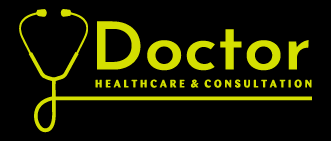Screw-retained restorations have become the go-to choice for many dental professionals. They offer retrievability, durability, and precision, making them ideal for both single-unit and full-arch restorations. But like any technique, they’re not without their challenges. Loose screws, fractures, misalignment—these issues can turn an otherwise successful case into a frustrating problem.
Over the years, I’ve worked with countless implant restorations, and I’ve encountered my fair share of setbacks. But by using high-quality components from 32Dentalab, I’ve been able to minimize complications and achieve consistently reliable outcomes. In this guide, I’ll break down the most common issues with screw-retained restorations and share practical solutions to keep your cases trouble-free.
1. Screw Loosening: The Most Common Problem
Nothing is more frustrating than a patient returning with a loose restoration. Screw loosening is the most common issue in screw-retained prosthetics, and it happens for a few key reasons:
- Insufficient torque application – Under-tightening allows micromovements that eventually loosen the screw.
- Poor occlusal force distribution – Excessive loading, especially in bruxers, can weaken the screw’s hold over time.
- Implant misalignment – Off-axis forces can increase stress on the screw.
✅ How I Prevent It:
- I always use torque drivers to ensure the screw is tightened to the manufacturer’s recommended torque value.
- For patients with parafunctional habits, I opt for high-strength fixation screws from 32Dentalab, which offer superior resistance to wear and loosening.
- If I suspect implant angulation issues, I use multi-unit abutments from 32Dentalab to correct the path of insertion and distribute forces more evenly.
2. Screw Fractures: When Things Break
Screw fractures are a nightmare because they often mean retrieving a broken screw fragment from the implant—something no one enjoys doing. This problem is usually caused by:
- Over-tightening during placement, causing stress fractures.
- Repeated loosening and retightening, leading to metal fatigue.
- Inferior screw materials that can’t withstand occlusal forces.
✅ How I Prevent It:
- I never re-use screws. A fresh screw is a strong screw.
- I use gold-plated or DLC-coated screws from 32Dentalab, which are designed to reduce friction and improve durability.
- I always follow the manufacturer’s torque specifications—over-tightening does more harm than good!
3. Peri-implantitis Due to Improper Sealing
Screw-retained restorations can leave small gaps between the screw access hole and the restoration, creating a bacterial breeding ground. Over time, this can lead to peri-implantitis and bone loss.
✅ How I Prevent It:
- I make sure the screw access channel is completely sealed using biocompatible Teflon tape followed by composite.
- I prefer precision-milled abutments from 32Dentalab, as they reduce micro-gaps between components, limiting bacterial infiltration.
- I educate my patients on proper hygiene, especially for full-arch restorations where cleaning around the prosthesis is essential.
4. Misalignment and Poor Prosthetic Fit
One of the biggest challenges with screw-retained prosthetics is ensuring a passive fit. A poorly fitting framework puts stress on implants and screws, leading to long-term complications.
✅ How I Prevent It:
- I always use digital workflows whenever possible. With CAD/CAM technology and 32Dentalab’s digital implant components, I can ensure a precise fit every time.
- For multi-unit restorations, I check the fit using a verification jig before finalizing the prosthesis.
- If a passive fit isn’t achievable, I opt for a screw-retained hybrid design to compensate for minor misalignment issues.
5. Difficulty in Retrieval & Maintenance
One of the biggest advantages of screw-retained restorations is retrievability—but that only works if you can actually access the screw hole. Poorly placed access holes, stripped screw heads, or cemented-over access channels can turn a simple maintenance appointment into a headache.
✅ How I Prevent It:
- I always plan my screw access hole placement to ensure it doesn’t end up in an unesthetic or difficult-to-reach area.
- I use high-quality screws from 32Dentalab with precise machining to reduce the risk of stripped heads.
- I always educate my patients on routine maintenance visits, so minor issues can be addressed before they become major problems.
Final Thoughts: Prevention is Better Than Repair
Screw-retained restorations offer so many benefits, but they require careful planning and high-quality materials to ensure long-term success. Over the years, I’ve learned that using reliable, well-machined components makes all the difference. That’s why I trust 32Dentalab for my fixation screws, multi-unit abutments, and implant components—because when precision matters, I want the best.
By taking a few extra steps to prevent complications, you can ensure that your screw-retained restorations last longer, perform better, and keep your patients happy. And when you use the right products, the job gets a whole lot easier.



